Can’t find your discipline or profession? Write to us and we’ll
do our best to work something out.
Every project is unique.
We adjust our services to your needs.
Libera Brilliance+ is a high-precision BPM signal processing system developed especially for the needs of electron synchrotron accelerators, in both the booster and the storage ring.
Libera Brilliance + general description:
Libera Brilliance+ features accurate electron beam position measurements at various data rates and bandwidths simultaneously, excellent beam current dependence characteristics, sub-micron position measurement resolution, and low crosstalk between channels. It is built on proven technology and with extensive experience and knowledge gained from its predecessors, Libera Brilliance and Libera Electron.
Libera Brilliance+ is optimized to work with input signals from button pick-ups. The signal from the pick-ups is processed in the signal processing chain, which is composed of analog signal processing, digitalization on fast ADCs, and digital signal processing. Four data paths at different sampling rates with different bandwidths and resolutions are available to the user. Acquisitions can be done simultaneously on all four data paths (ADC raw data, turn-by-turn data, fast acquisition, and slow acquisition data)
Its digital signal processing supports programmable bandwidth and can facilitate all position measurements required in various regimes: pulsed, first turns, turn-by-turn, and a regular closed orbit.
Position of the instrument:
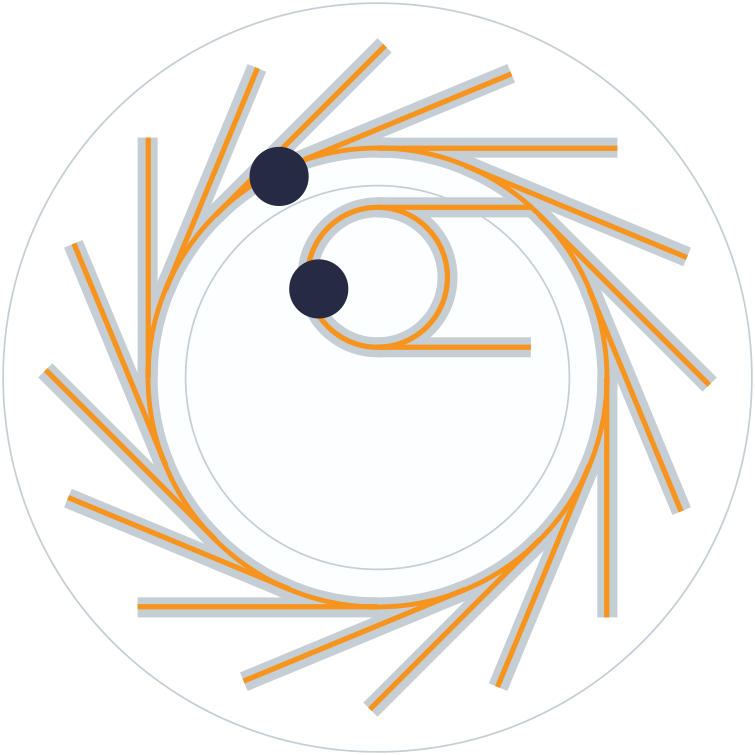
Benefits:
Data processing:
The signal processing chain in Libera Brilliance+ is composed of analog signal processing, digitalization for fast ADCs, and digital signal processing. Input signals are sampled at 100-125 MHz PLL-controlled sampling frequency. Raw ADC data is stored in a buffer and further processed through a time-domain processing block (TDP) and frequency-domain processing block (DDC, I&Q demodulation).
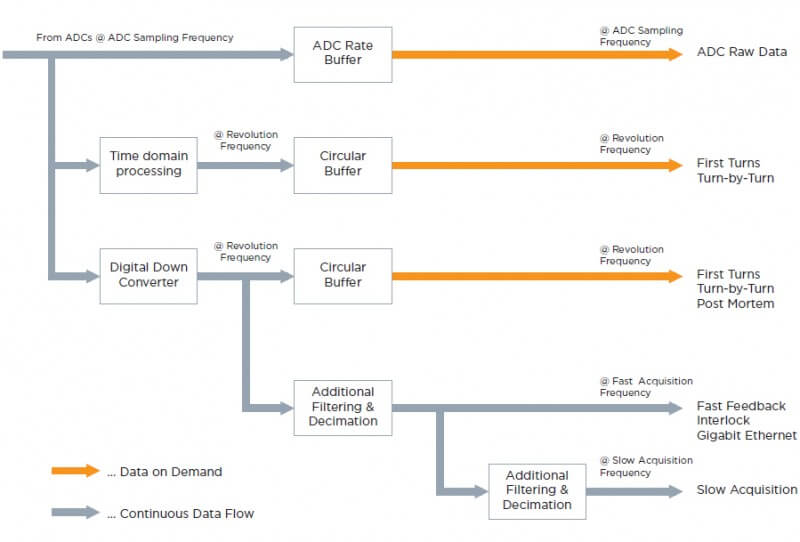
The turn-by-turn processing blocks can be fine-tuned with processing delay, offset, and masking window. Data from first turns and other machine studies is available on-demand using hardware or software triggers.
Libera Brilliance+ provides several data paths at different sampling rates with different bandwidths and resolutions. Acquisitions can be done simultaneously on all four major data paths (ADC raw data, turn-by-turn data, fast acquisition, and slow acquisition data). Optionally, the fast acquisition data can be provided through the GDX module (Small Form-Factor Pluggable slots) at 10 – 30 kS/s data rate and serves as the input data for fast global orbit feedback.
Interfaces:
The instrument is based on the MTCA.0 modular technology and hosts up to 4 BPM modules in a single 2U 19” chassis. There is space for additional extension modules, such as the GDX module or SER module. Both can be used for building the FOFB application that runs inside the instrument completely.
Besides the hardware interfaces, software interfaces are essential for control and monitoring. A proprietary software framework (Libera BASE) runs in the instrument interfacing to FPGAs and low-level firmware as well as hosting the concrete application. On top of the software framework, there is an upper layer that interfaces to various control system servers. Typically, servers run inside the instrument (e.g. EPICS, TANGO, HTTP, etc.).
Most common interfaces used with Libera Brilliance+ are EPICS and TANGO.
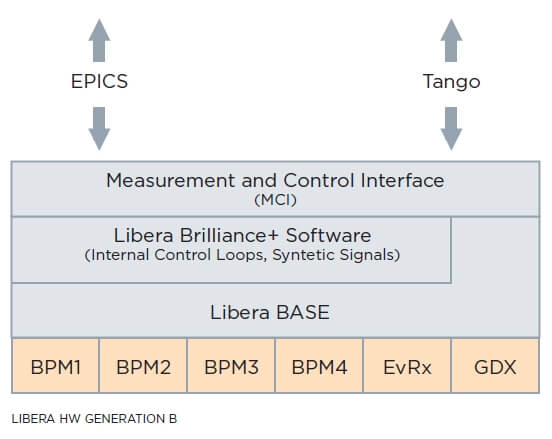
| Temperature drift, typical | 0.2 μm/°C |
| Position RMS at turn-by-turn data rate | 0.5 μm |
| Position RMS at fast 10 kHz data rate | 0.07 μm |
| Position RMS at slow 10 Hz data rate | 0.02 μm |
| Position RMS at single bunch | / |
| Position RMS at macro pulse/continuous wave | / |
FAST GLOBAL ORBIT FEEDBACK
A complete orbit feedback solution consists of several Libera instruments based on Platform B, all equipped with the GDX module, which enables them to exchange the orbit beam position data via an optical network.
Inside of every GDX module, specific data processing calculates the corrections to apply to the magnet controllers (via the optional SER or SER II modules). The correction can be made locally or globally. A general schematic is shown below.
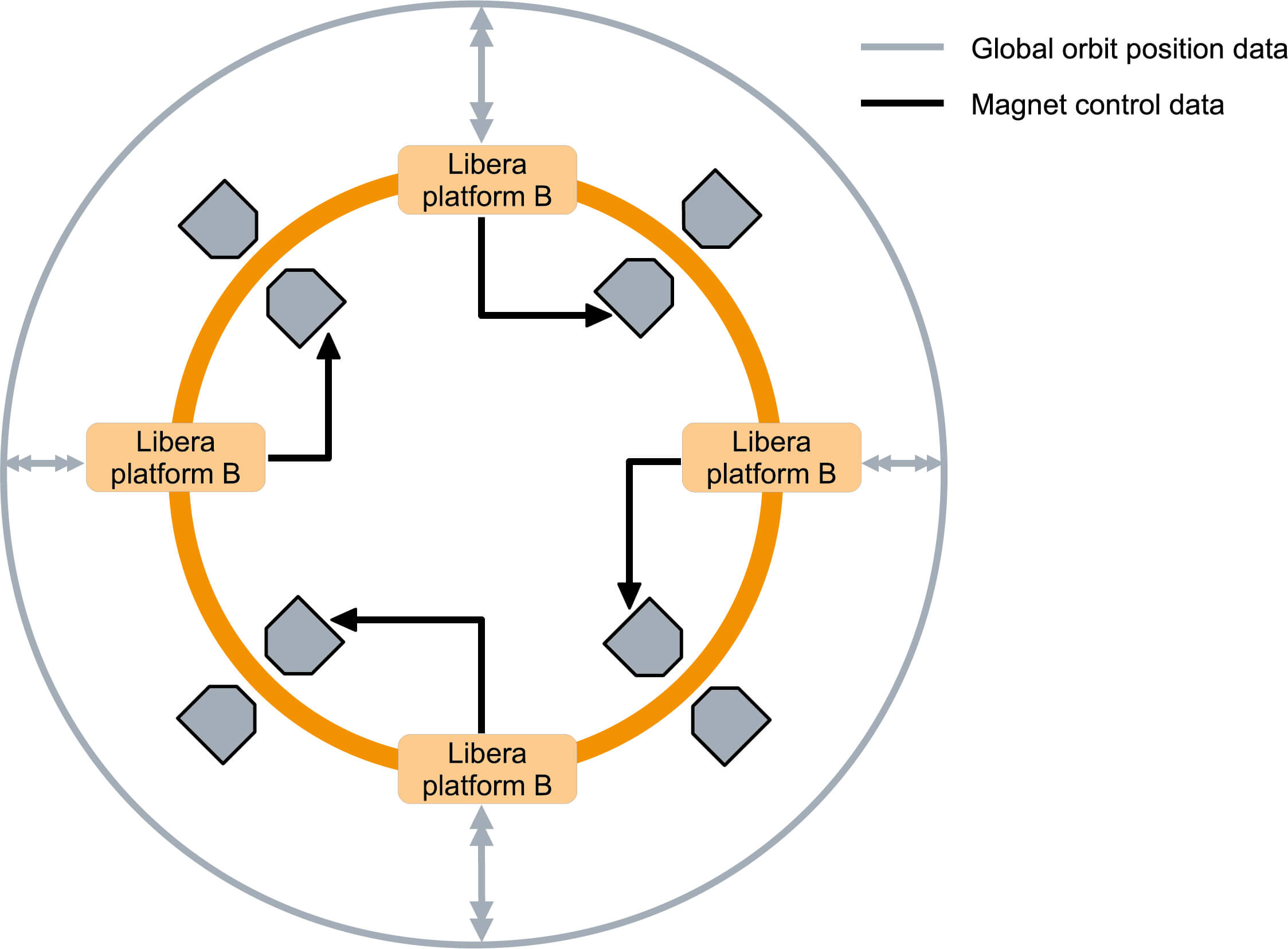
A standalone orbit feedback solution is another possible topology, consisting of one or two Libera Platform B instruments equipped with the GDX module (optionally also with the SER/SER II module). Global orbit data is exchanged between the BPM electronics via the dedicated broadband network or concentrated in the data server. Global orbit data packets must be provided to the GDX module over a copper or optical link. The orbit feedback application inside the module applies custom-written algorithms and data processing before being sent to the magnet controllers (locally or globally). A general scheme is shown below.
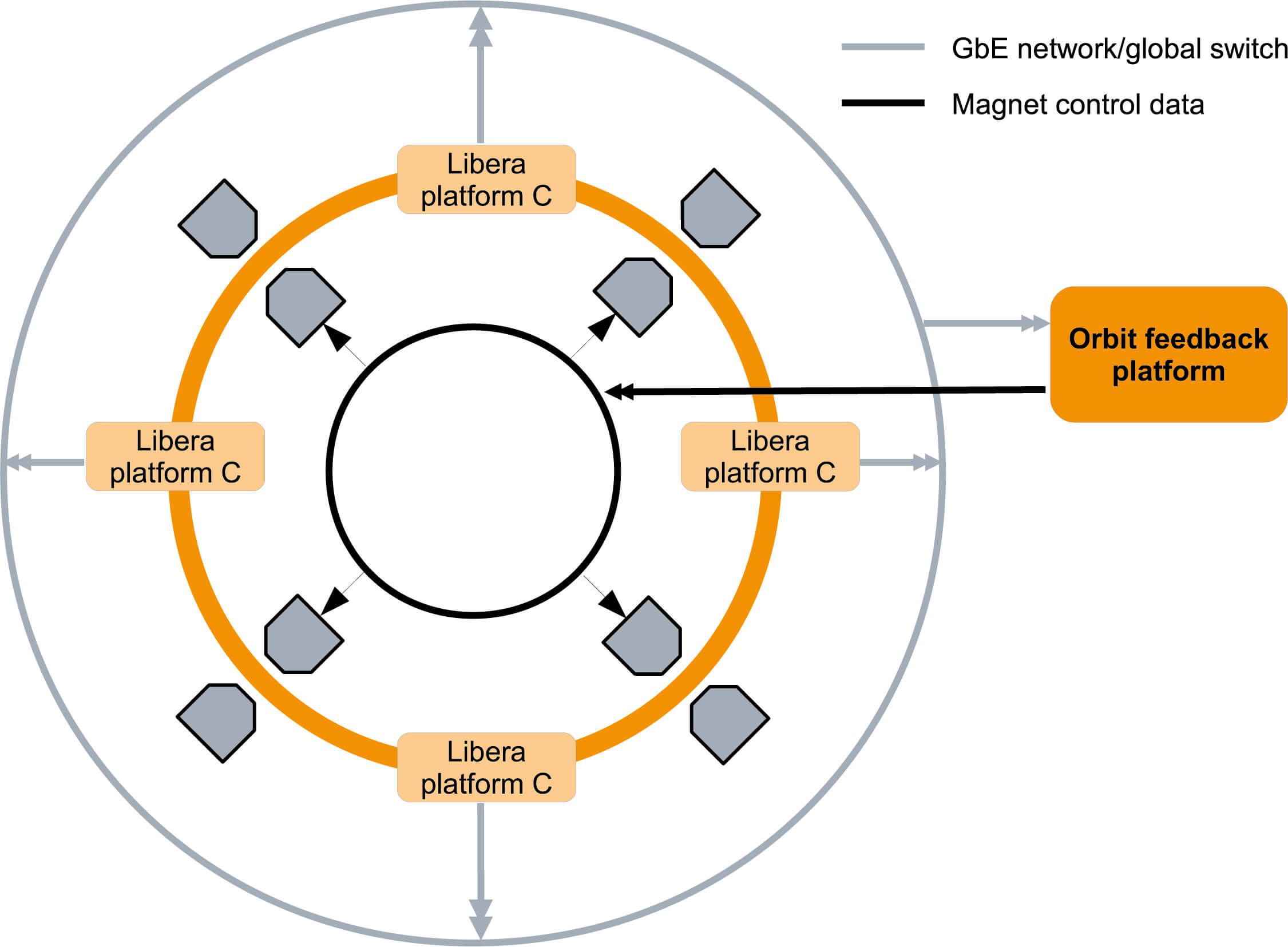
The GDX module extends the interconnection capabilities of the BPM electronics.
The SER module features four RS-485 interfaces directly controlled from the GDX module.
Supplementary analog front-end for the Libera Brilliance+ BPM electronics.
Overview and the boot-up procedure
Installing the modules
Libera Brilliance+ is used at the following labs:
Can’t find your discipline or profession? Write to us and we’ll
do our best to work something out.
We adjust our services to your needs.